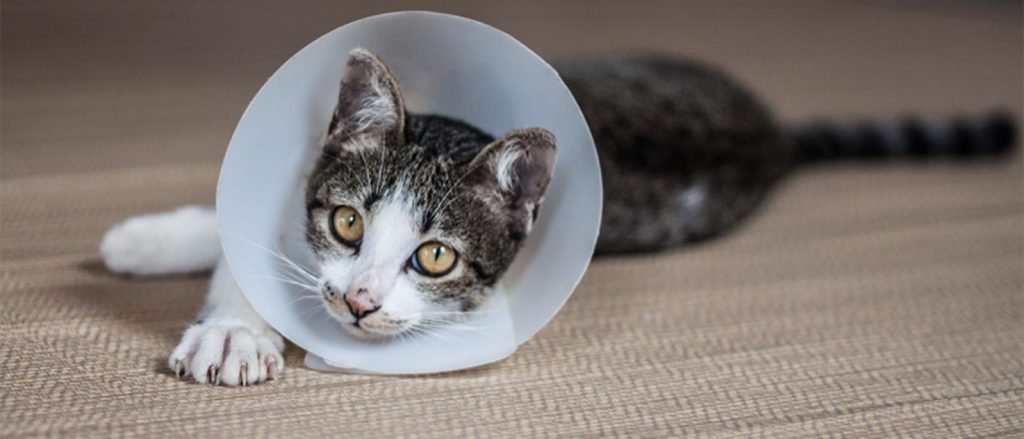The first question that will arise in any person’s mind if you own a Cat as your pet is getting it spayed is important? Your Vet would perhaps suggest getting the spaying and declawing done together too.
This article will help you answer this question and give you more information as to how to care for your pet after a procedure like spaying and declawing.
How To Take Care Of A Cat After Spaying And Declawing
At the point when you initially get a new pet, probably the most ideal approach is to give them a sound beginning and getting them spayed. Spaying will profit your pet restoratively and has good health benefits too. Regardless of whether you are doing it for everyone’s benefit or to benefit your pet, spaying your female pet has many good results. Technically, you can have your pet spayed at practically any time, however, it is suggested that you can get your cat spayed when she is 5 months old or so. This gives your cat, the advantages of being spayed while she has ample time to grow

What To Know About Spaying And Declawing Of Cats
Ovariohysterectomy, or the average “spaying“: is when the ovaries, fallopian tubes and uterus are taken out from a female cat. This makes her incapable to reproduce and removes her breeding instinct.
On the other hand, Onychectomy or in easier terms “declawing” is a careful surgery where the front knuckles of the cat’s toes are removed so that they can not utilize its claws to scratch furniture or hurt others during harsh play, however it likewise makes your pet unfit to protect itself if it ever crosses path with any other aggressive cat or pet.
If you have decided to go ahead with these procedures, it is very important to provide proper care to your pet to avoid any kind of problems in future.
How To Take Care Of Your Cat After Spaying
As the owner of the cat, you’re accountable for your cat’s aftercare. That implies keeping your cat repressed for a couple of days and intently checking her cut.

Points To Remember While Taking Care
- You'll need to watch out for your cat and hold her back from running and bouncing for around fourteen days or however long your veterinarian suggests.
- If you have a cat who heads outside, you should keep her inside for 24–48 hours after the medical procedure.
- Noticing your feline is a significant piece of spaying aftercare. Your feline might be surprisingly quiet for a little while after her medical procedure. During this time, she may have less hunger, which is presumably a consequence of the sedation.
- Correctly follow the headings on your feline's meds. Give her the meds on schedule and as per the recommended portions. Try not to quit giving your feline meds early except if your vet has informed you that it's OK.
- You'll likewise have to consistently investigate your feline's stitch site to ensure it's mending how it should.
- Take care of your cat’s comfort. To ensure your feline is protected and well-rested after being spayed, you can buy her a feline bed where she can rest.
- If you find the health of your cat deteriorating, inform your vet right away.
How To Take Care Of Your Cat Post Declawing
Since your cat is declawed, it won’t scratch your furnishings (or you!), which is something to be thankful for. Notwithstanding, getting declawed can be excruciating for your feline, so obviously you need to give your pet loads of affection and make her way to recuperation as simple as could be expected.

Points To Remember While Taking Care
- Your feline may have practically zero cravings for the initial 24 hours to a day and a half after her medical procedure, so give her modest quantities of food at a time until she is prepared to eat or drink more.
- Make a point to give the medicines on schedule.
- You can fill her litter box with shredded paper or a store-bought paper litter for the following 14 days, as soil and different sorts of litters could get into her injuries and infections can happen.
- Be cautious while removing bandages. You can remove the bandages the next day after surgery or as directed by the Vet. Start by removing the external tape, and delicately pull the internal bandage away from your feline's paw. Never use scissors to do this procedure, as you could harm your cat’s paw.
- During recuperation, your feline will require a little space to rest. Permitting them to approach the whole house may urge them to bounce—which can make the stitches tear open. To assist your feline with getting the rest it needs, set its bedding up in a little room, like the washroom. Make certain to incorporate delicate sheet material and a lot of new food and water
- Call your vet in case there is something unusual happening with your cat, which the vet hasn’t informed.
Final Words
Your cat is going through a tough time due to the pain, make it a priority to take care of your pet so that you don’t have to regret it later. Follow instructions and keep in touch with the Vet throughout.
Hope your pet recovers fast!
